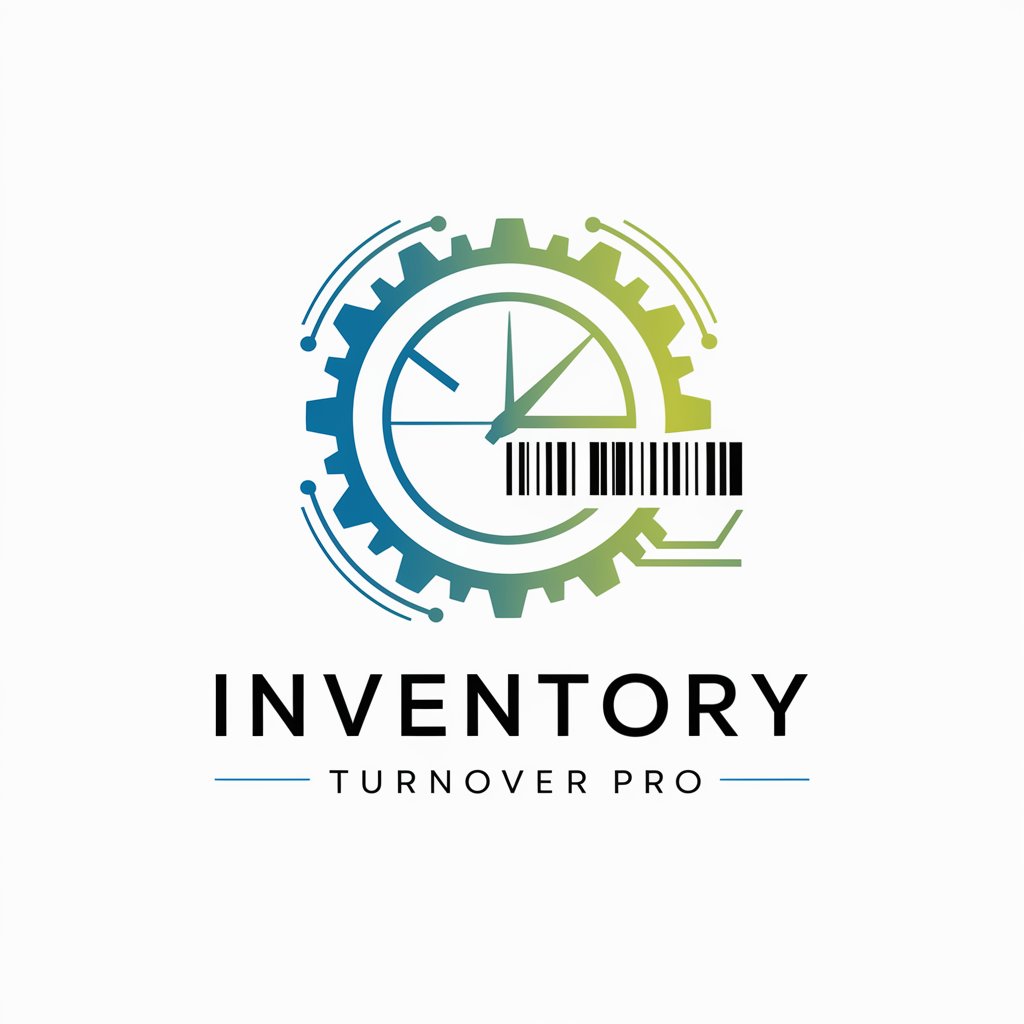Inventory Turnover Analysis - Inventory Analysis Tool

Welcome to Inventory Turnover Pro, your partner in optimizing inventory efficiency!
Optimize stock effortlessly with AI-powered analysis.
Can you help me calculate the inventory turnover rate for my business?
What strategies can I use to optimize my inventory management?
How do I identify slow-moving inventory items in my stock?
What are some best practices for improving inventory turnover?
Get Embed Code
Understanding Inventory Turnover Analysis
Inventory Turnover Analysis is a vital tool designed to measure the efficiency of inventory management within a business. By analyzing how quickly inventory is sold or used over a specific period, it provides insights into inventory health, highlights potential overstock or understock issues, and suggests areas for optimization. For example, a retail clothing store can use Inventory Turnover Analysis to identify which clothing lines are selling quickly and which are not, enabling them to adjust purchasing decisions to better match consumer demand. Similarly, a manufacturing company might use this analysis to monitor raw material usage rates, ensuring they maintain optimal inventory levels to meet production schedules without incurring excess holding costs. Powered by ChatGPT-4o。

Core Functions of Inventory Turnover Analysis
Calculation of Inventory Turnover Ratio
Example
For instance, a grocery store calculates its inventory turnover ratio to understand how often it sells through its inventory in a year. By dividing the cost of goods sold by the average inventory, they can manage perishable goods more effectively.
Scenario
This function is critical in industries with perishable goods, helping businesses minimize waste and ensure product freshness.
Identification of Slow-Moving Items
Example
A hardware store identifies slow-moving inventory items that have not sold within an expected timeframe. This analysis helps in deciding whether to put items on sale, return them to suppliers, or remove them from the inventory.
Scenario
Useful in retail to optimize shelf space and in warehouses to reduce holding costs, thereby improving overall inventory efficiency.
Recommendations for Inventory Optimization
Example
Based on turnover rates, a consultancy firm advises a pharmaceutical company on optimal reorder levels and quantities for various drugs, considering demand forecasts and supplier lead times.
Scenario
Particularly beneficial for industries where demand can fluctuate widely, such as healthcare, to maintain service levels while minimizing stockouts and overstocks.
Who Benefits from Inventory Turnover Analysis
Retail Businesses
Retailers, both physical and online, benefit significantly from inventory turnover analysis by aligning stock levels with consumer demand patterns, maximizing sales and reducing carrying costs.
Manufacturing Companies
Manufacturers use inventory turnover analysis to maintain a balanced approach to raw material and finished goods inventory, ensuring timely production runs without overinvesting in stock, thus optimizing cash flow.
Supply Chain Consultants
Consultants specializing in supply chain management leverage inventory turnover analysis to provide strategic advice to their clients, helping them to streamline operations, reduce costs, and increase profitability.

How to Utilize Inventory Turnover Analysis
Begin Your Journey
Start by accessing a free trial at yeschat.ai, offering immediate usage without the need for signing up or subscribing to ChatGPT Plus.
Understand Your Needs
Identify the specific inventory challenges you face, such as excess stock, low turnover rates, or identifying slow-moving items, to tailor the analysis to your needs.
Input Data Accurately
Enter your inventory data, including costs of goods sold (COGS) and average inventory, ensuring accuracy for reliable turnover calculations.
Analyze Results
Review the calculated inventory turnover ratio to understand how efficiently inventory is being managed and identify areas for improvement.
Implement Recommendations
Use the tool's recommendations to adjust purchasing decisions, improve inventory management practices, and optimize stock levels for better turnover rates.
Try other advanced and practical GPTs
Fox GPT
Optimize training with AI efficiency.

Renovation101
Transforming Education with AI-Powered Renovation Insights

Worday AI Podcast
Crafting Viral Podcasts with AI

IBT - Engineer‘s Assistant
Empowering Engineering with AI

RBDS Color Connoisseur
Crafting Custom Color Solutions with AI

学术助手
Empowering Academia with AI

brand
Craft Your Brand's Future with AI

Humor Coloring Creator
Craft Your Laughter with AI

7mm Rem Mag
Precision at Distance: Unleash Potential

Buddhisme
Enlighten Your Path with AI

常識破りの経営者
Revolutionize your business decisions with AI-driven insights.

Chess
Master Chess with AI-powered Insights

Frequently Asked Questions about Inventory Turnover Analysis
What is Inventory Turnover Analysis?
Inventory Turnover Analysis is a method used to understand how quickly inventory is sold or used over a period. By calculating the inventory turnover ratio, businesses can assess their inventory management efficiency, identify slow-moving items, and optimize stock levels.
Why is inventory turnover important?
A higher inventory turnover indicates efficient inventory management, reducing holding costs and minimizing the risk of obsolescence. It helps businesses maintain a balance between having enough stock to meet demand without overstocking, thus improving profitability.
How do I calculate the inventory turnover ratio?
The inventory turnover ratio is calculated by dividing the cost of goods sold (COGS) by the average inventory for the period. This metric helps in evaluating how many times inventory is sold or replaced during a specific timeframe.
Can Inventory Turnover Analysis help with slow-moving inventory?
Yes, by identifying products with lower turnover rates, businesses can implement strategies such as discounts or promotions to increase sales, adjust purchasing decisions, and optimize stock levels to improve overall turnover.
How can I improve my inventory turnover ratio?
Improving inventory turnover involves better demand forecasting, efficient inventory management practices, reducing excess stock, and focusing on high-demand products. Regular analysis and adjustments based on turnover insights are key to maintaining optimal inventory levels.
